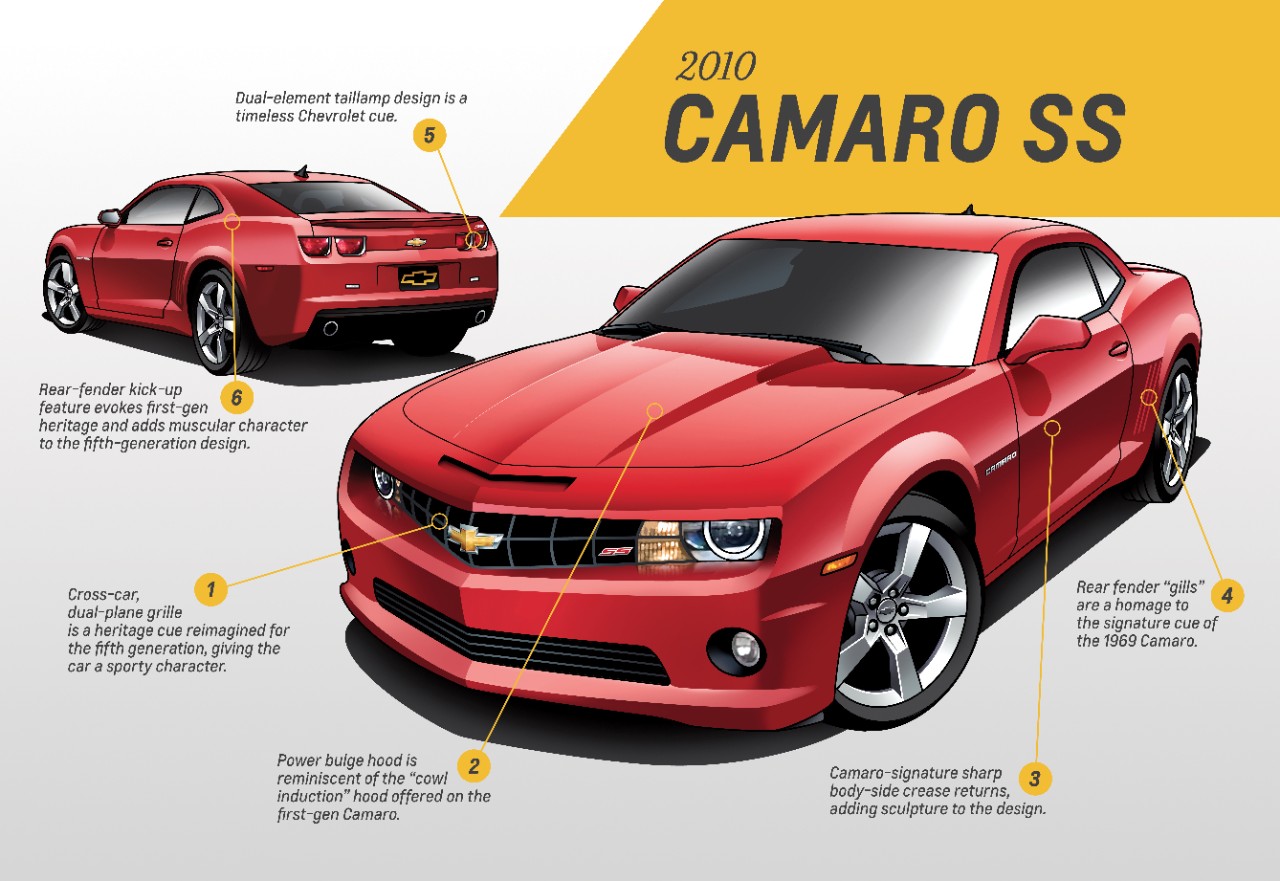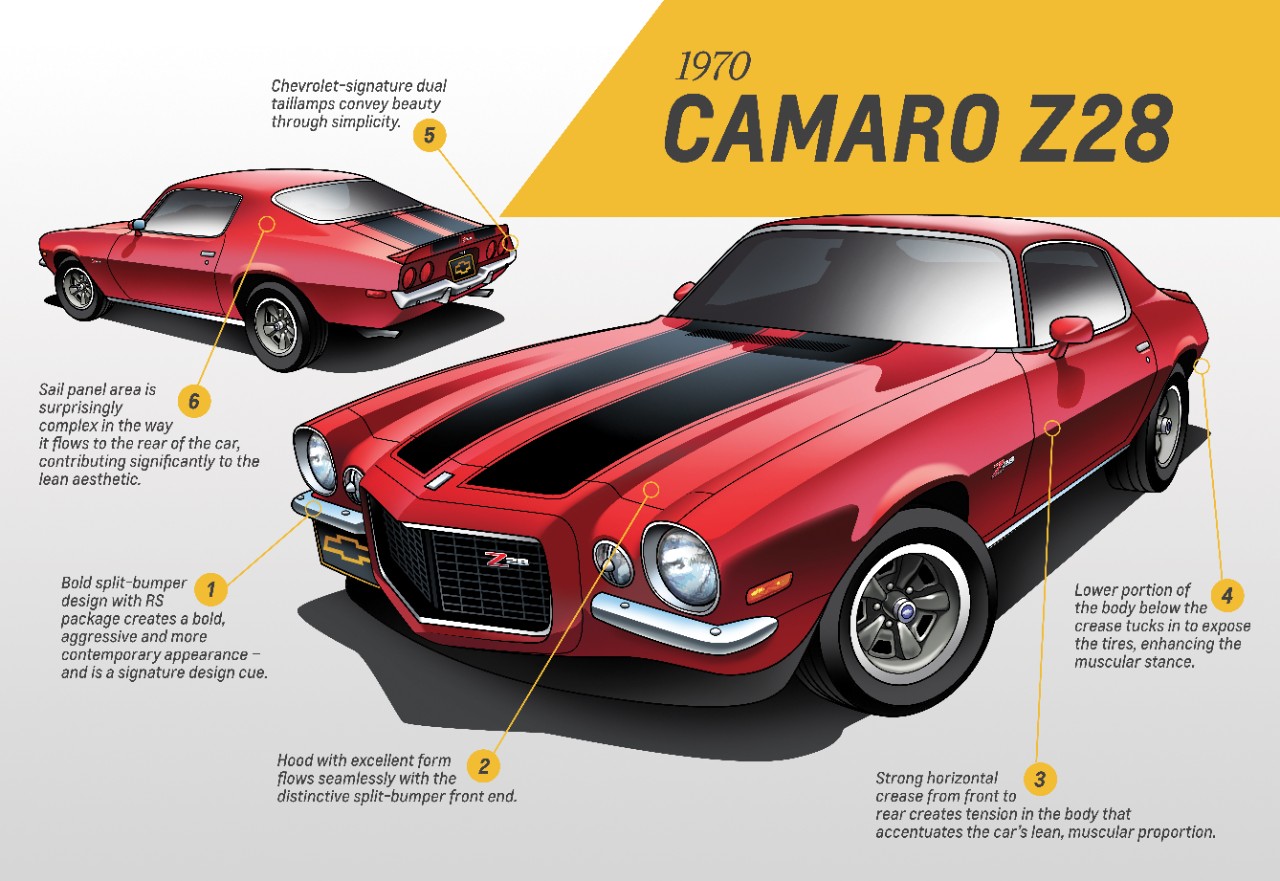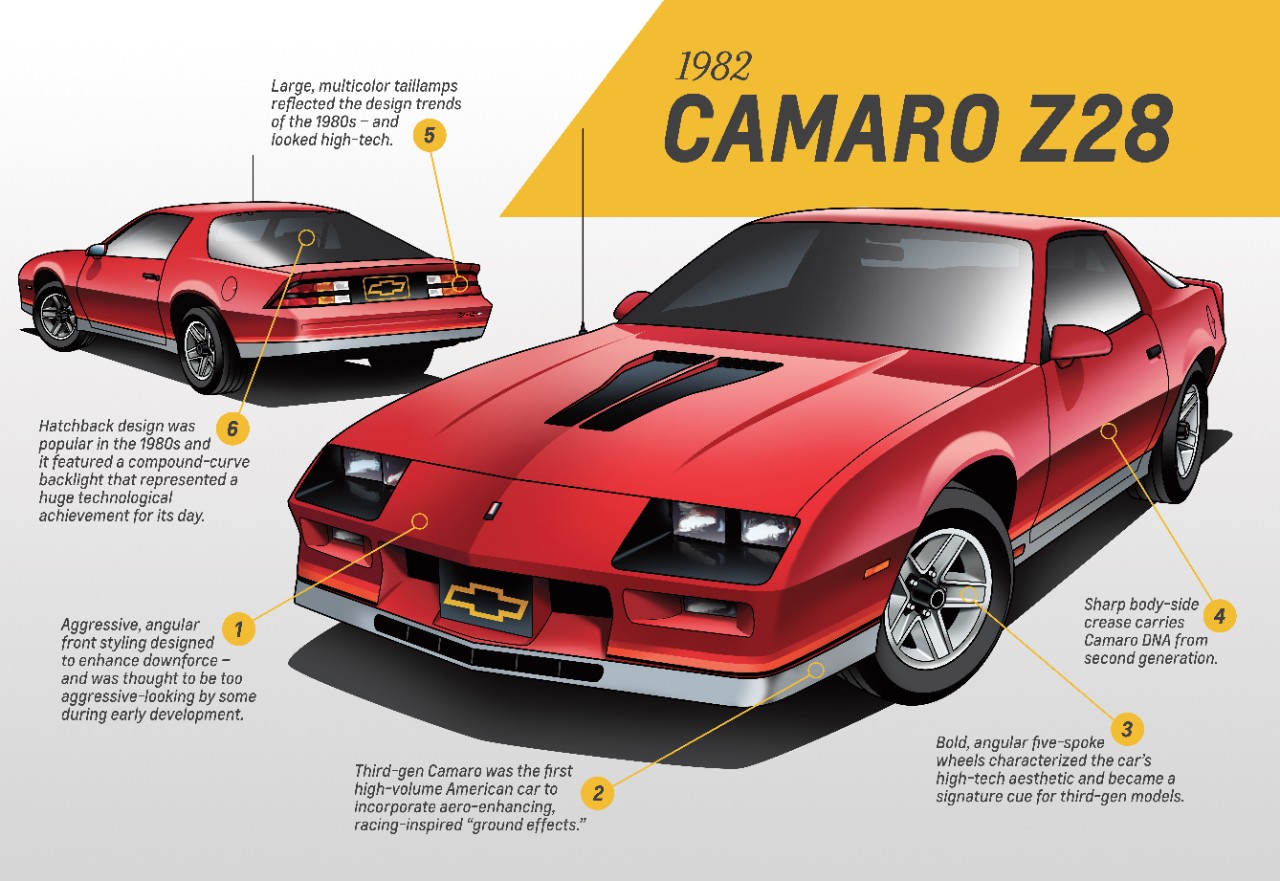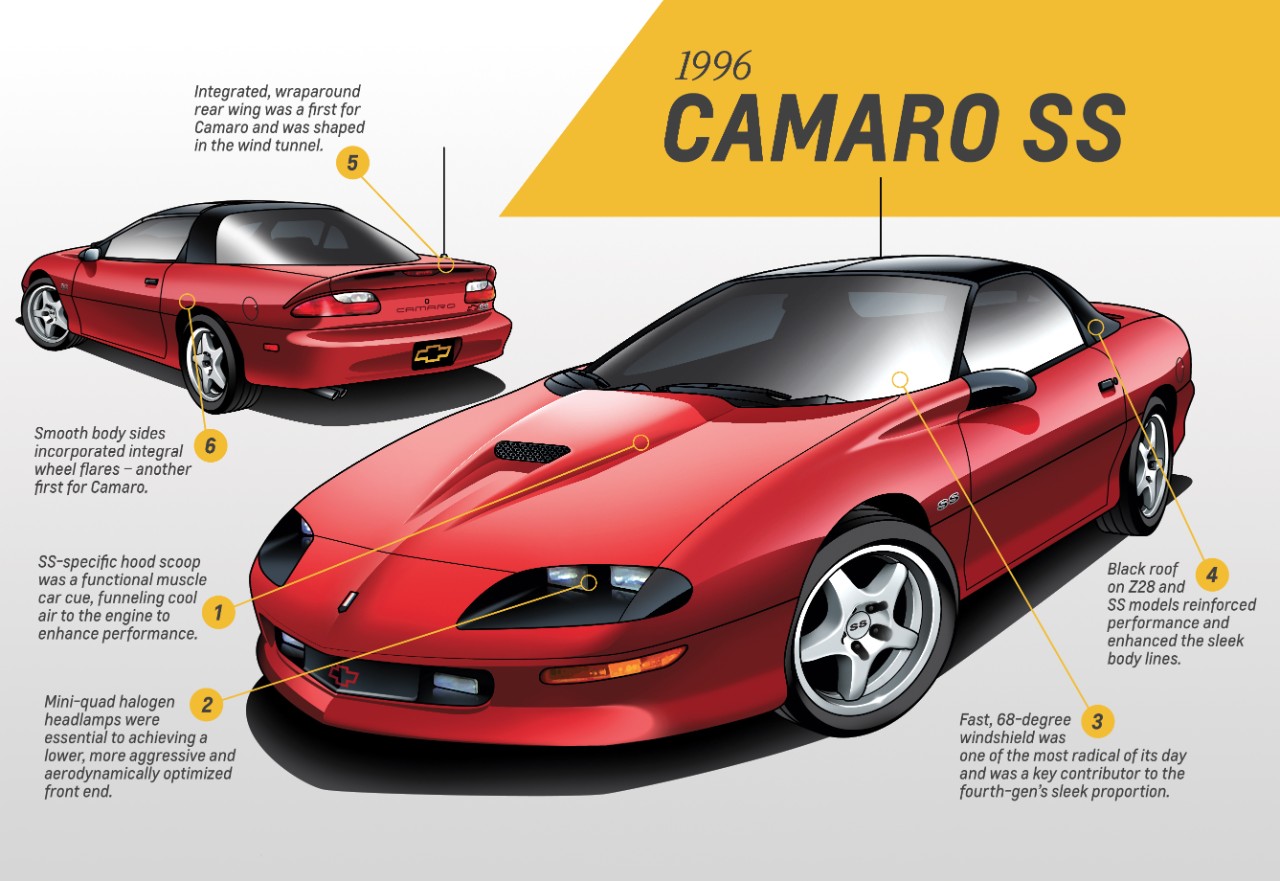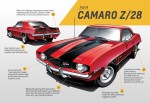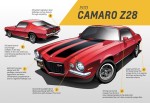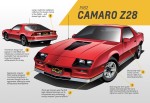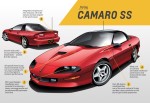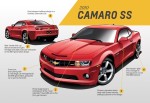Chevrolet Takes a Look at the History of Camaro Design
Just as a skilled mechanic can pick apart an engine and explain what every little part of it does and where it goes, a talented automotive designer can dissect the visual elements of a car’s exterior and explain the effects they have on our eyes. Chevrolet asked five of the people responsible for styling within GM who own (or have owned) Camaros to give their opinions on what made each of the five generations of the Mustang-fighter distinctive and attractive.
Ed Welburn, GM’s vice president of Global Design, mentioned the original Camaro’s wide tail lights and rear fenders made the car look wide and muscular. Apparently, its cowl induction power bulge hood, dual-plane grille, body-side crease, and faux air intake openings ahead of the rear wheels were so iconic Chevy had to bring them back years later…
Although Ken Parkinson, executive director of design for Chevrolet Trucks and Global Architecture, owns a 1968 Camaro, he had plenty to say about the early version of Chevrolet’s sophomore pony car offering. He said, “The second-gen car is pure Camaro, with a dramatic proportion and lean, muscular form.” The crease along the body adds tension and a sense of motion. Below that line, the body tucks in and exposes the tires, making the Camaro look more muscular. The sail panel area flows into the rear of the car in a complex way that gives the vehicle a lean appearance.
The third-gen Camaro “was a uniquely American design with a form developed for function – and its aggressive front-end styling was deemed almost too aggressive by some in the company,” John Cafaro, executive director of Chevrolet Global Car Design, said. The 1982 Motor Trend Car of the Year, like many vehicles of the era, was a hatchback. However, it had racing-inspired ground effects for improved aerodynamics. Its quad rectangular headlights would reappear in the following generation of the Camaro.
Who better to comment on the styling of the ’93-’02 Camaro than a professional automotive designer who owns a 1993 Z28? Kirk Bennion, Chevrolet Camaro exterior design manager, focused on the 1996 SS’s smooth sides with integrated wheel flares, the pronounced rake of its 68-degree windshield, and the car’s wind-tunnel-tuned wraparound rear wing.
Bennion didn’t say this, but I will: the fourth-gen Camaro was the most visually unique one Chevrolet’s ever made. It shed a lot of the DNA of its ancestors, but not to the detriment of its looks.
It’s fitting that Chevrolet asked the owner of a 1969 Camaro to give his two cents about the design of the current generation of the machine. I knew the fifth-generation model incorporated some cues from the original Camaro, but I had no idea just how aesthetically similar the two cars are. Thanks to Tom Peters, Chevrolet Camaro exterior design director, I now do. Both bow ties have a dual-plane grille, a sharp body-side crease, a power bulge hood, and kicked-up rear fenders with “gills.”
Chime in with your thoughts on the forum. >>
via [Chevrolet]

